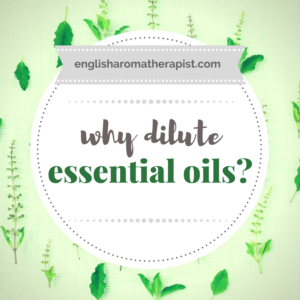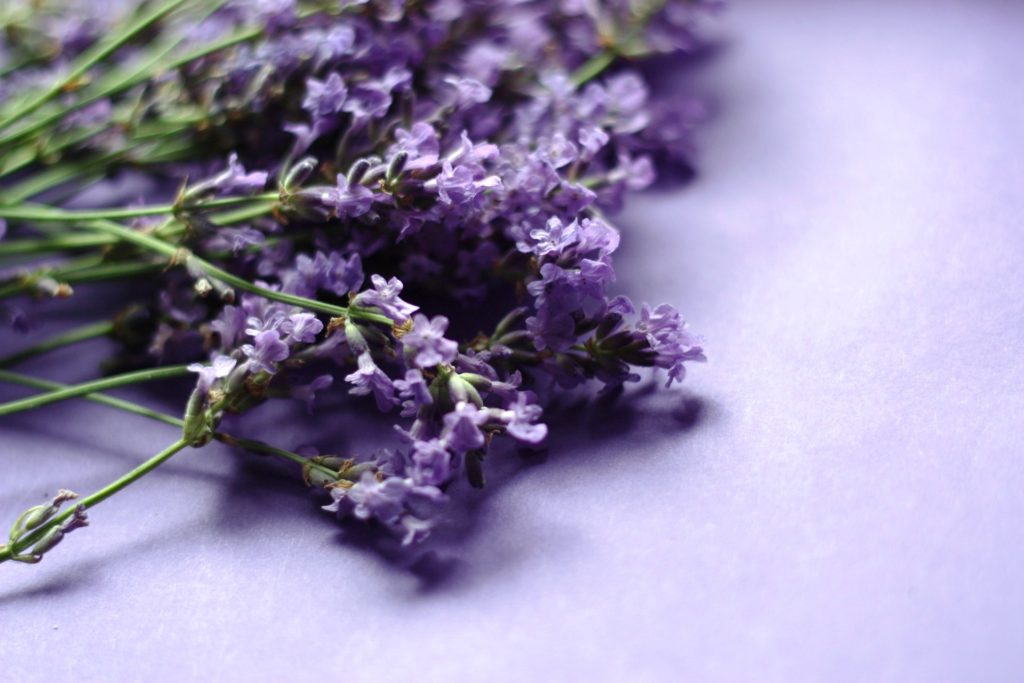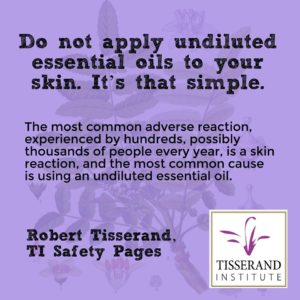Why Dilute Essential Oils?

There is still some confusion surrounding the dilution of essential oils – which is not surprising, given the amount of misleading advice that we see online.
Some brands imply that dilution is optional. What’s the truth? Should we always dilute essential oils? If so, what is the recommended dilution strength?
What are the myths?
When it comes to essential oils, there are plenty of mistruths floating around social media – not least when it comes to dilution. Some of the common myths you’ll see are…
“if essential oils are truly ‘pure’ they are safe to use undiluted”
“only ‘hot’ oils (e.g. wintergreen, oregano) need to be diluted”
“you only need to dilute essential oils if you have sensitive skin”
Some advice recommends only diluting essential oils with a carrier oil if you experience skin irritation. Some brands will suggest dilution but fail to specify a recommended dilution rate, leaving it to guesswork.
Why Should We Dilute?
-
Because It’s Safer
Diluting essential oils lowers the risk of skin irritation and/or sensitization. Contrary to popular belief, it is possible to experience an adverse reaction to any essential oil – no matter how pure, how organic or how “therapeutic grade” it is. You can become sensitized to any essential oil – yes, even lavender, as several aromatherapists have unfortunately discovered (including Marge Clark, owner of Nature’s Gift).
Many people are under the illusion that the risk of irritation entirely depends on the brand. But it’s the chemical composition that matters – cinnamon bark oil that’s 100% pure is still a potential skin irritant.
The Aromatherapy United Injury Report makes sobering reading for anyone who believes that routine neat application of essential oils is perfectly safe. The potential consequences can be alarming, to say the least. Neat usage increases the risk of irritation, redness, itching, blisters, hives, burns and other adverse symptoms. And, despite what some reps might have you believe, this is not a detoxifying process – as explained in more detail here. Sensitization is a serious issue, and not something to be taken lightly.
And remember: just because you’ve always used them neat and never had an issue yet, that doesn’t mean it’s safe for you, or for everybody else.
-
Because It’s More Economical
Hmm, I wonder why certain companies encourage us to use their essential oils neat all the time? Clue: $$$
Diluting your essential oils means your 10ml bottle will stretch much further, and last a lot longer before you need to reorder. Why waste money needlessly?
-
Because It’s Less Wasteful
Essential oils are made from natural resources, some of which are endangered. It takes masses of raw product to distil just 10ml of essential oil – fruits, flowers and plants that have been carefully grown and harvested. Essential oils are precious – why squander them unnecessarily?
-
Because It Can Be More Effective
When it comes to essential oils, less is more. Using more drops will not necessarily be better, or quicker, in achieving your objective. It’s important to remember that using a carrier oil does not dilute the effectiveness of the essential oil. Dilution also makes it easier to apply over a larger area of skin, which helps to increase absorption.
-
Because It Makes the Scent Last Longer
Diluting essential oils in a carrier oil prevents them from evaporating too quickly, which helps the scent to linger for longer – so you’ll benefit more from the application. Remember, inhalation is an important element of how essential oils work in aromatherapy.
-
Because Carrier Oils are Fabulous
Far from being merely a neutral tool for diluting essential oil, carrier oils offer their own therapeutic properties that can be enormously beneficial. Your choice of carrier oil can greatly influence the effectiveness of a blend, particularly for skin-related issues.

What about Lavender and Tea Tree?
Until recently, it was considered acceptable to occasionally use one drop of undiluted lavender or tea tree oil on spots or burns. Opinion on this is evolving, however, as we’re discovering that even lavender can cause sensitization over time.
Some professional aromatherapists may occasionally choose to use a drop of undiluted essential oil when appropriate, but this would be at their own discretion and not recommended for home users.
How to Dilute
Now that we’ve established that dilution is necessary, it’s important to discuss safe dilution rates.
There is little point in telling people to dilute their essential oils without explaining how to do this safely. Many essential oil recipes that you find online are based on dilution rates that are dangerously (and unnecessarily) strong.
2%
For general use, essential oils should be diluted in a 2% blend. This means using a total of 4-5 drops of essential oils per 10ml carrier oil.
e.g. 2 drops Mandarin + 3 drops Lavender diluted in 10ml carrier oil
This ratio can be scaled up or down to blend different quantities – for example, 40-50 drops of essential oils per 100ml carrier oil.
1%
The above dilution should be halved to 1% for children, pregnant women and those with sensitive skin. This means using a total of 2 drops of essential oils per 10ml carrier oil. For very young children, you might wish to use a 0.5% dilution, which would be just 1 drop of essential oil in 10ml carrier oil.
3-5%
Sometimes a stronger blend can be used for occasional or limited use on a small area of skin (e.g. a roller blend). But for regular or everyday use, it’s best to stick with a standard 2% strength.

Total Drops
The specified number of drops relates to the total amount – for example, 4 drops per 10ml carrier oil means a total of 4 drops, not 4 drops of each individual essential oil.
Dermal Maximum
Some essential oils are potential skin irritants and/or skin sensitizers, and should only be used in a low dilution – usually referred to as a ‘dermal maximum’. For example, cinnamon bark should only be used very sparingly at a maximum dilution of 0.07% (Essential Oil Safety, 2nd Edition (2014) Tisserand & Young) For specific details, always consult an up-to-date aromatherapy textbook.
What can we use to dilute oils?
- Essential oils are typically diluted in a carrier oil – such as grapeseed, sweet almond, coconut, sunflower, jojoba or olive oil.
- An unfragranced lotion can also be used as a carrier to dilute essential oils.
- Please note, water cannot be used to dilute essential oils. Always dilute essential oils before adding to a bath.
When should we NOT dilute?
Essential oils should not be diluted in carrier oil when used in an electric diffuser.
I will let renowned expert Robert Tisserand have the final word on the subject…

Now watch the video!
Further reading:
https://www.aromaweb.com/articles/dilutingessentialoils.asp
https://www.facebook.com/RobertTisserandEssentialTraining/posts/882094028488466
http://tisserandinstitute.org/new-survey-reveals-dangers-of-not-diluting-essential-oils/
https://naha.org/explore-aromatherapy/safety/
http://aromatherapyunited.org/injury-reports/injury-reports-2016/
http://www.alliance-aromatherapists.org/aromatherapy-safety
What to read next: Does Aromatherapy Really Work?
Follow me on...
Share this on...
